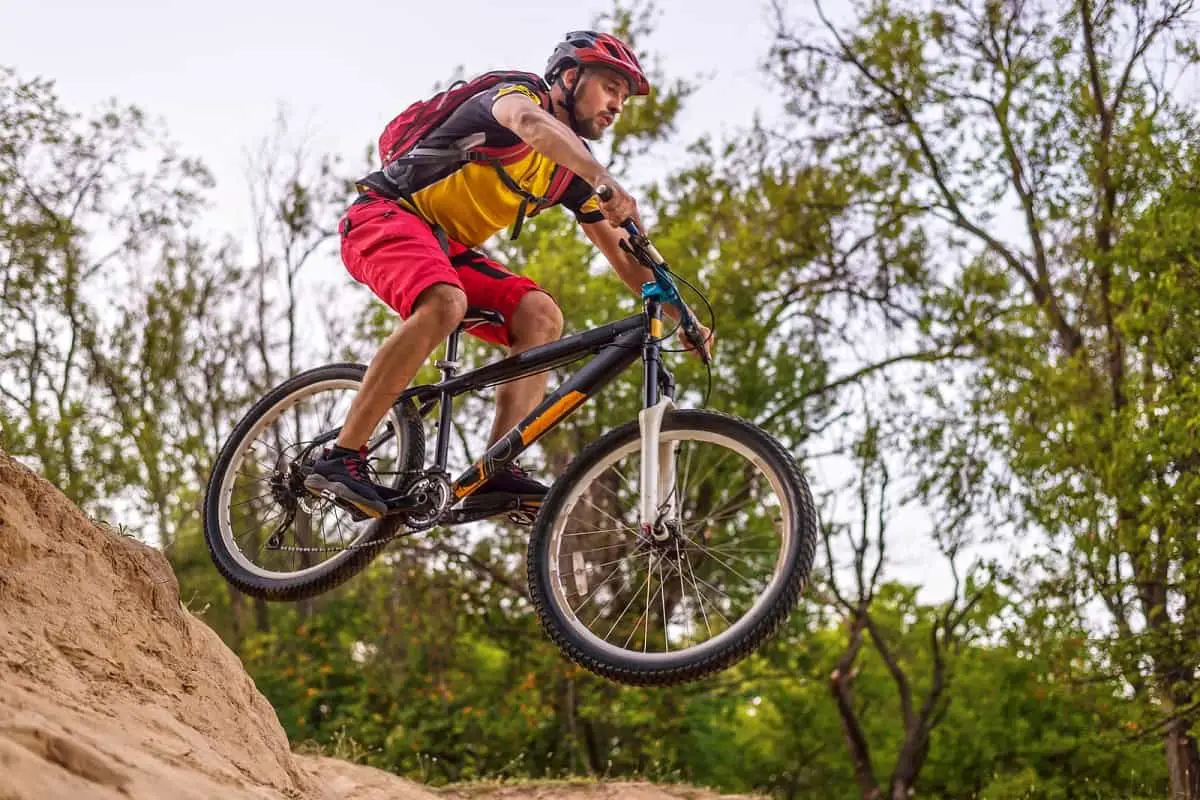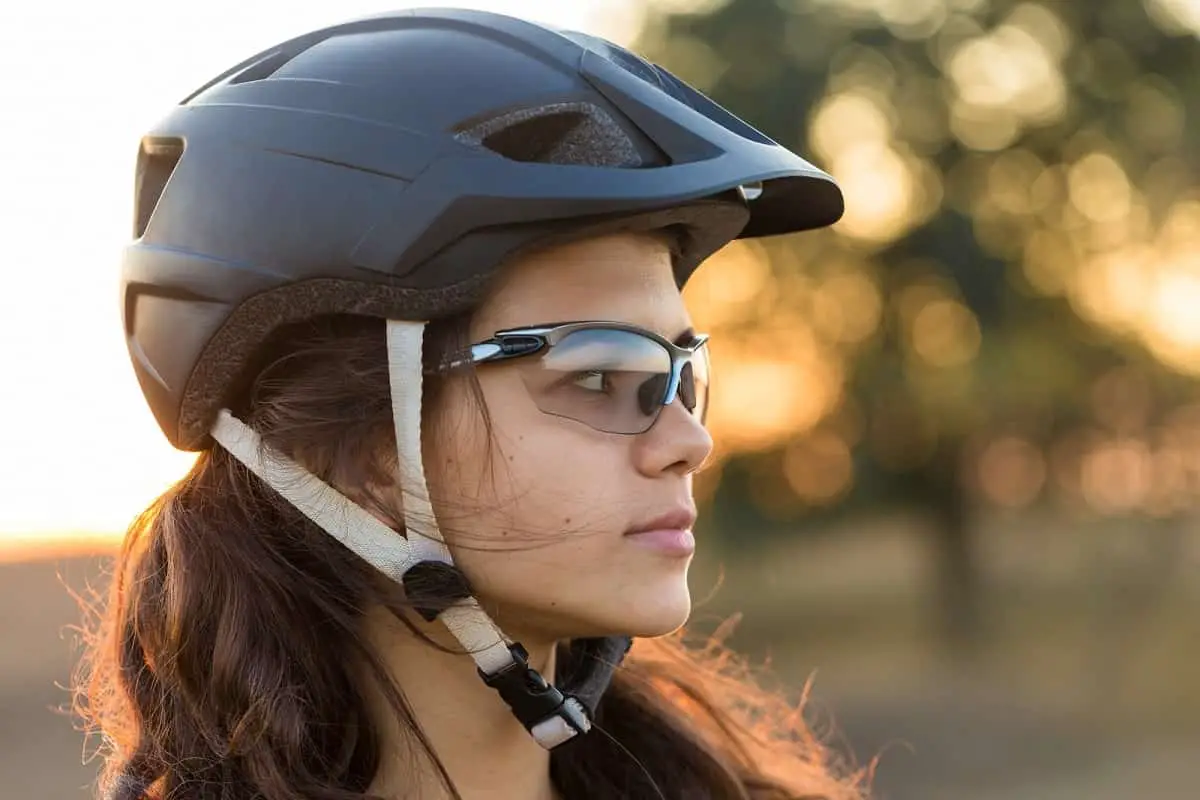How Should A Mountain Bike Helmet Fit
Mountain biking is an enormously popular activity, but it can also be a fairly dangerous one, so if you are thinking of taking it up, getting the proper protective gear is crucial.
The most important aspect of this is choosing a helmet that fits properly so that your head will be protected in the event of a crash. But, how should a mountain bike helmet fit? Let’s find out.
Helmets have been shown to make an enormous difference in minimizing injury rates from bike crashes and preventing serious head injuries in many situations.
You should never go mountain biking without a helmet, and you must make sure that the helmet fits your head properly if it is going to protect you at all.
Page Content

Disclosure: As an Avantlink and Amazon Associate, we earn from qualifying purchases. Disclosure Statement.
Mountain Bike Helmet Fit
A badly fitted helmet is not going to protect your head properly in a crash, and could even be the cause of unnecessary injuries. It is therefore of the utmost importance that you make sure your helmet fits properly – so let’s look at how you can do this.
We’ll start by finding a helmet that is the right size as per your head’s circumference. Next, we will look at how the helmet should sit correctly on your head. And, then we will make the necessary adjustments for your head’s comfort and securing the helmet properly.
VIDEO: How To Measure For A Bike Helmet
How To Measure For A Mountain Bike Helmet
To measure for a mtb helmet, you should wrap a measuring tape around the largest part of your head, which is usually about an inch above your eyebrows and just above your ears. For a quick how-to with video, please check ‘How To Know Your Helmet Size’.
Once you have your head’s measurement, you can then compare this against the helmet manufacturer’s size chart to see which size helmet you need.

Most bike helmets come in a variety sizes, while some helmets will be what is known as ‘one-size-fits-most’, which can be adjusted to suit many sizes by way of a dial adjuster along with additional padding.
Sizes are brand specific, which means that the Medium size of one manufacturer may not be the same size as a helmet from a different manufacturer, so it’s best to physically try on a helmet before you purchase it, to allow for variations in size and style.
Knowing your head measurement will help you determine which helmets are likely to fit your head so you know which ones to try on.
Helmet Position On Head
The helmet should sit flat on your head, not tilting either forward or backward, or to one side or the other. The front rim of the helmet should generally rest about an inch above your eyebrows, protecting your forehead in the event of a crash.
When checking the position of a helmet, loosen all straps and fittings so that you can tell where it rests naturally. If it slips forward over your eyes or falls back, it doesn’t fit you correctly, and you should try another size.
If you’re a total newbie to wearing a bike helmet, our article ‘How To Wear A Bike Helmet’ will help you to get it right.
This content was originally published on headsdontbounce.com. If it appears on another website, it is a violation of the copyright owned by headsdontbounce.com.

Helmet Adjustment Mechanism
Most open-face mtb helmets will have a dial adjuster at the back of the helmet that will let you adjust the fit. This can be turned clockwise to tighten the fit of the helmet, or counter-clockwise to loosen it. This rear dial mechanism is increasing in popularity because of the simplicity that it offers.
If you choose a one-size-fits-most helmet, the rear adjuster will be more effective after you have added or removed the padding that comes with the helmet.
It’s always best to choose a helmet that is snug to begin with rather than trying to make a helmet that is too big or too small fit by way of padding and adjusters.
How To Adjust Helmet Straps
The straps are key to keeping the helmet on your head, so it’s important to make sure that they are tight, but not so tight they become uncomfortable.
Start by adjusting the straps just below the ears if it is adjustable, however, some cannot be adjusted. The straps will form a ‘Y’ shape at both sides of your head with the straps hanging in front and behind your ears.

The main adjustment to the straps will be at the bottom under your chin. One strap will not be able to adjust, but the other needs to be adjusted so that the helmet is securely attached to your head.
A good method for testing whether the chinstrap is tight enough or too tight is you should be able to fit two fingers between the strap and your throat. The straps should be tight enough that the helmet pulls down a little if you open your mouth wide, but no tighter.
When the straps are tight, shake your head from side to side and see if the helmet stays in place. If necessary, keep adjusting the straps so that it stays tight without strangling you.
Keep in mind that the rear dial adjuster is for making your helmet feel comfortable on your head, but the chin-strap is responsible for keeping the helmet attached to your head if you crash.
Full Face Helmet Fitting
A full face helmet is great for additional protection, so if you are getting more confident and riding faster on downhill runs then a full face helmet or a removable chin-guard helmet is recommended.
Full face and removable chin-guard helmets rely on extra padding to create a comfortable fit, meaning that it is imperative that you aim for as close to the correct size from the beginning.

A full face helmet should feel snug against your head, particularly your cheeks. If the helmet sits more than an inch above your brows, the helmet is too small, and if it sits less than an inch above them, it’s too big. Once you have got a helmet that is the right size, use the provided foam padding to make it feel snug.
How Should A Full Face Mountain Bike Helmet Fit?
A full face mtb helmet should be snug around all parts of your head. The cheek pads should be touching your cheeks, and the jaw padding should be against your jaw. If it feels loose in any direction, it needs to be adjusted.
If you tip your head from side to side or back and forth, the helmet should stay in place against your head, and not slip around. However, it should not feel uncomfortably tight.
It’s important to keep in mind that a full face helmet will have a break-in period after which the padding will conform more to your head shape. So, a little tight at first is normal.
MTB Helmet Fit Test
So now that you have your helmet, open-face or full-face, on your head and it feels pretty comfortable, here are a few things you can do to ensure your helmet is going to stay securely on your head where you want it.
- Turn your head left and right quickly. Your helmet shouldn’t move any more than slightly. If necessary, tighten the rear adjuster dial (if you have one), and/or tighten the chin strap a little more. If your helmet moves a lot, you should try on a smaller size helmet.
- Bend forward. As above, the helmet should not move.
- Open your mouth like you were yawning. If your helmet fits right, the helmet should pull down on the top of your head. If not, you might need to tighten the chin strap, or try a smaller size.
- After wearing your helmet for a few months, the padding/liners inside the helmet may have compressed slightly making the helmet fit a little looser than previously. You should buy and install additional lining or padding as and when necessary to maintain a snug fit.
Conclusion
Helmets are crucial safety equipment if you’re going to ride a mountain bike, so take the time to ensure that yours fits correctly. If you shake your head and the helmet moves, it is not well fitted.
Related Reads:

